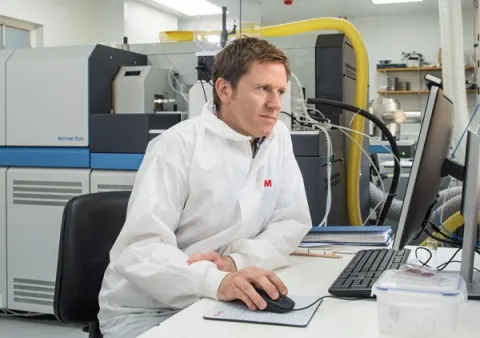About the project
The shells of single-celled calcifying zooplankton (foraminifera) are a crucial archive of past climate change and an important component of the global carbon cycle. This project will combine state-of-the-art geochemistry, microscopy, spectroscopy, and marine culturing techniques to mechanistically understand how these important organisms biomineralise.
The shells of calcifying planktonic marine organisms such as the foraminifera represent one of the largest long-term carbon sinks on Earth’s surface and are an important archive of geochemical systems that record past climate change. As such, and because the response of these organisms to anthropogenic climate change may be an important carbon cycle feedback, it is vitally important to understand how these organisms calcify.
However, foraminifera biomineralisation is only poorly understood. In particular, it is not known
- whether these organisms produce ‘low-magnesium’ calcite (<0.01 mol% MgCO3) by actively lowering the Mg concentration of seawater transported to the site of biomineralisation within the cell.
- if other processes, such as nonclassical calcium carbonate precipitation (via amorphous calcium carbonate) alternatively enables the organism to control shell chemistry.
Solving this issue would enable us to understand the sensitivity of calcification to past, present, and future environmental change.
To do so, this project will apply a suite of techniques to the study live foraminifera, including:
- confocal and Raman microscopy
- isotope labelling experiments
Ultimately, this information will be built into a biomineralisation model to help mechanistically underpin our understanding of the extent to which marine organisms will be impacted by future climate change and ocean acidification, within the framework of two recently-funded projects tackling this issue and a wider team of researchers.


